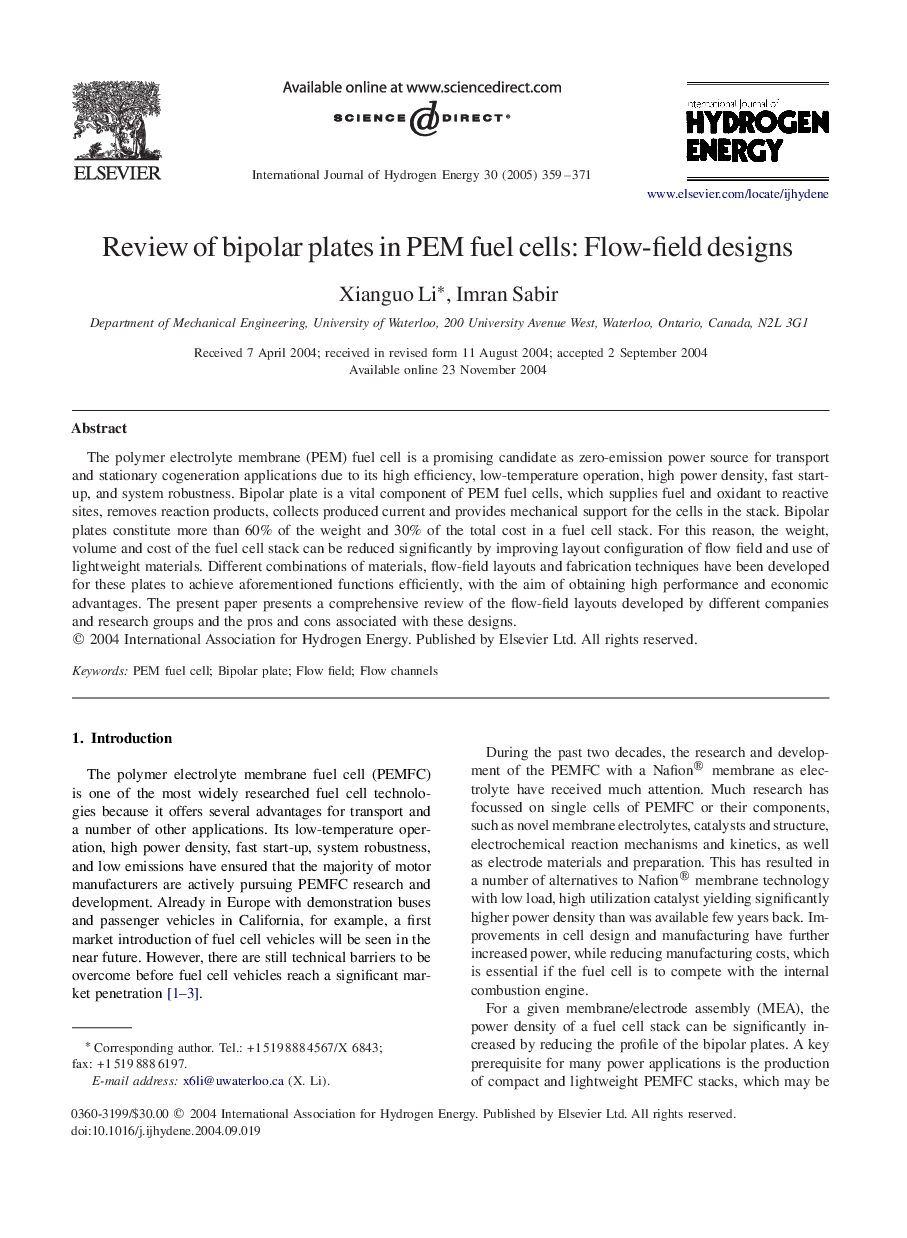| Article ID | Journal | Published Year | Pages | File Type |
|---|---|---|---|---|
| 9759333 | International Journal of Hydrogen Energy | 2005 | 13 Pages |
Abstract
The polymer electrolyte membrane (PEM) fuel cell is a promising candidate as zero-emission power source for transport and stationary cogeneration applications due to its high efficiency, low-temperature operation, high power density, fast start-up, and system robustness. Bipolar plate is a vital component of PEM fuel cells, which supplies fuel and oxidant to reactive sites, removes reaction products, collects produced current and provides mechanical support for the cells in the stack. Bipolar plates constitute more than 60% of the weight and 30% of the total cost in a fuel cell stack. For this reason, the weight, volume and cost of the fuel cell stack can be reduced significantly by improving layout configuration of flow field and use of lightweight materials. Different combinations of materials, flow-field layouts and fabrication techniques have been developed for these plates to achieve aforementioned functions efficiently, with the aim of obtaining high performance and economic advantages. The present paper presents a comprehensive review of the flow-field layouts developed by different companies and research groups and the pros and cons associated with these designs.
Related Topics
Physical Sciences and Engineering
Chemistry
Electrochemistry
Authors
Xianguo Li, Imran Sabir,
